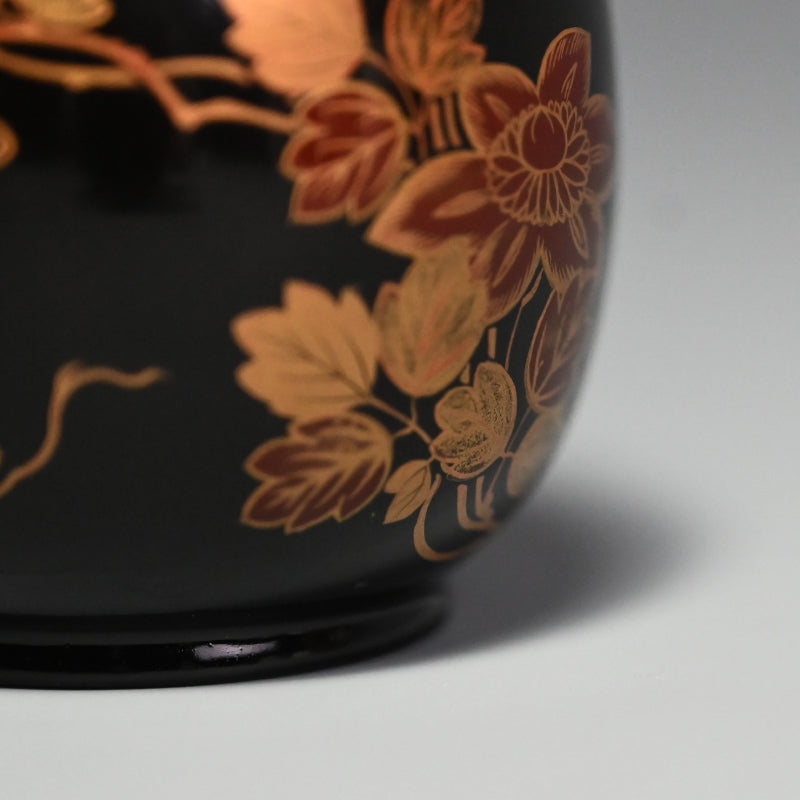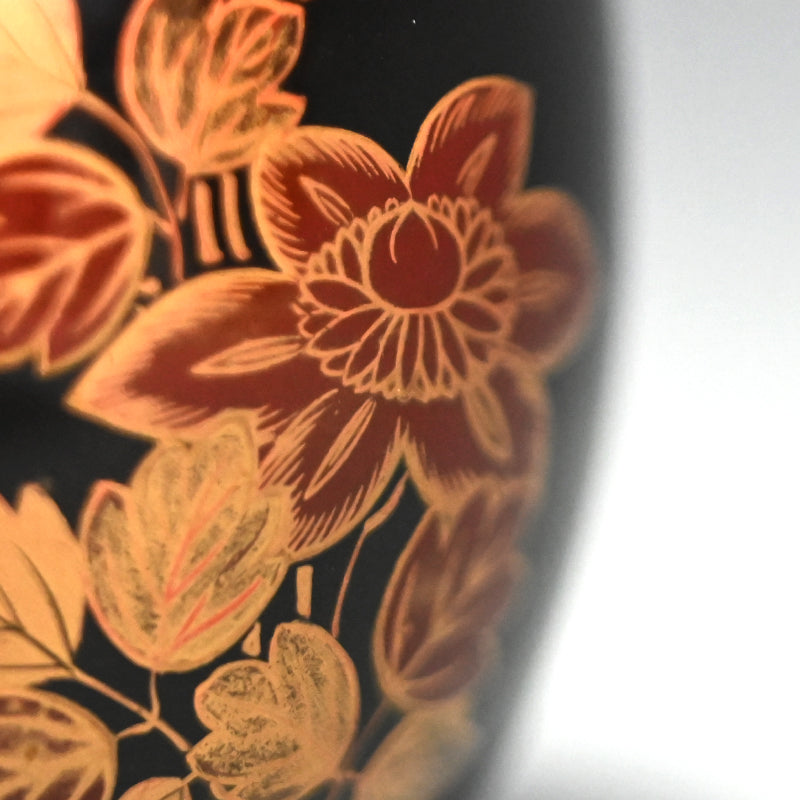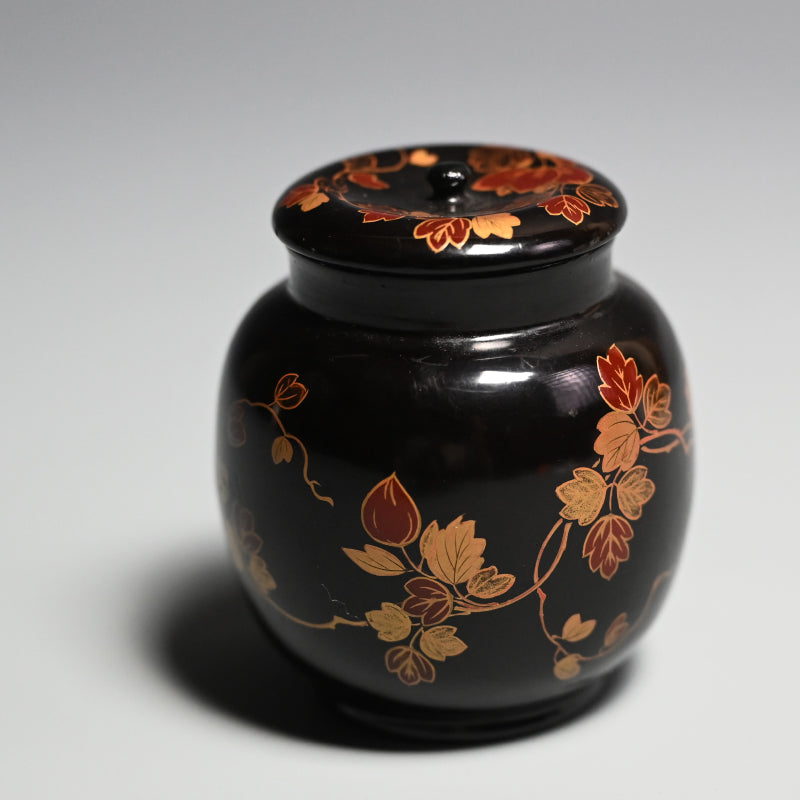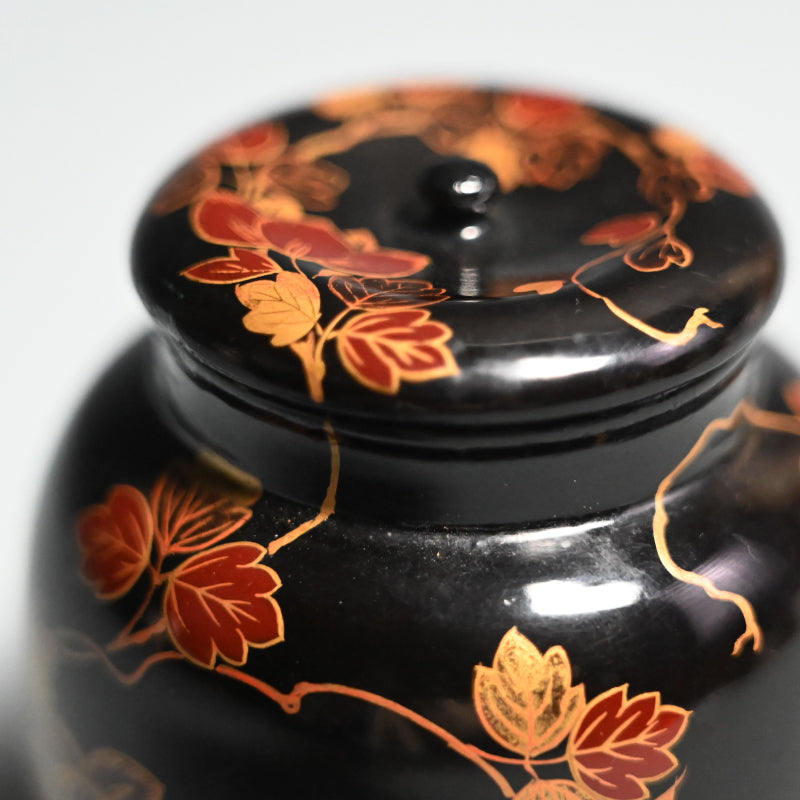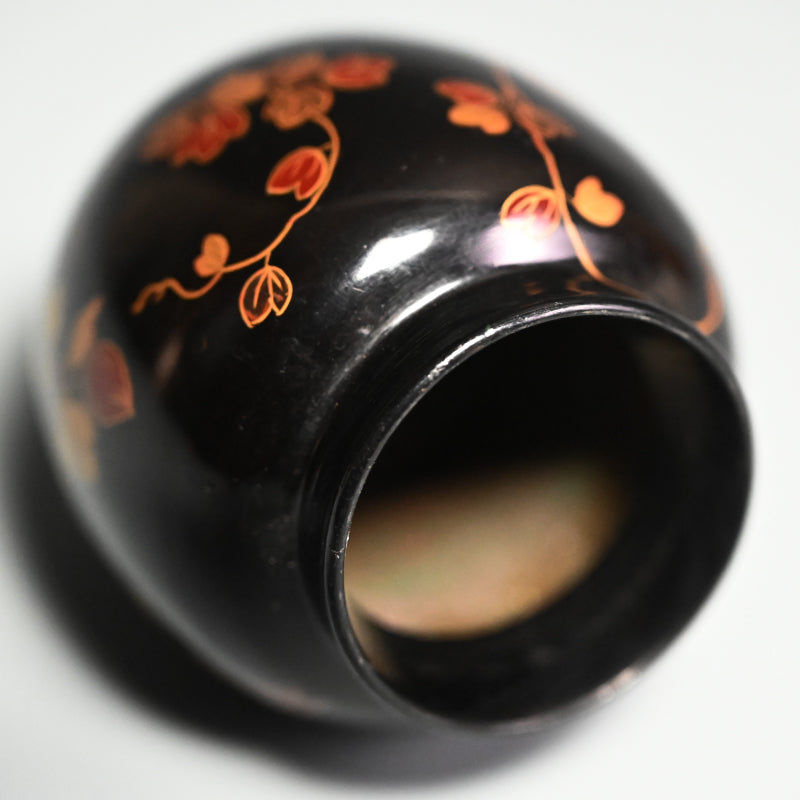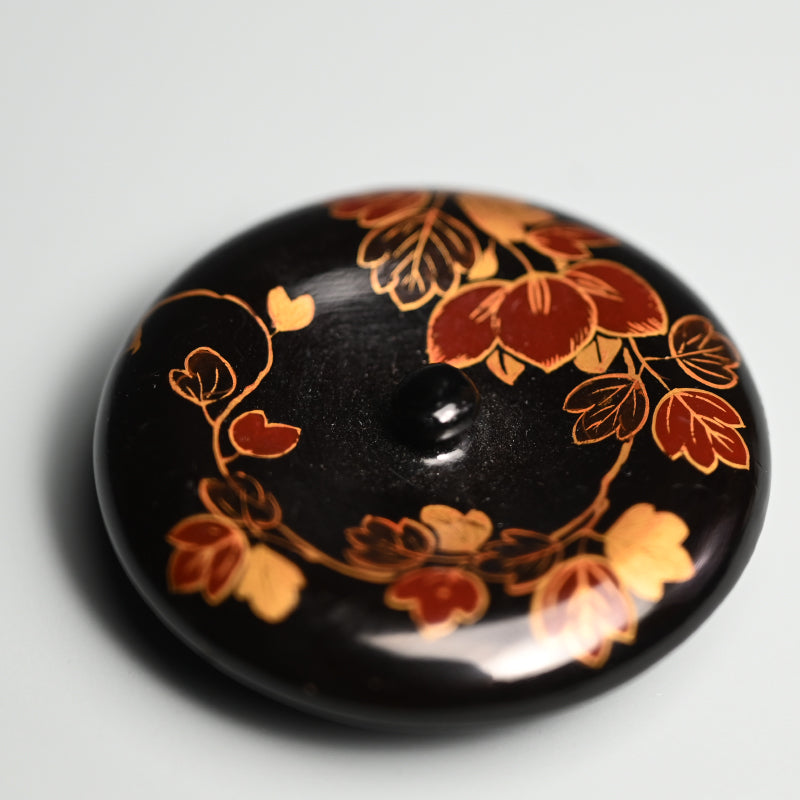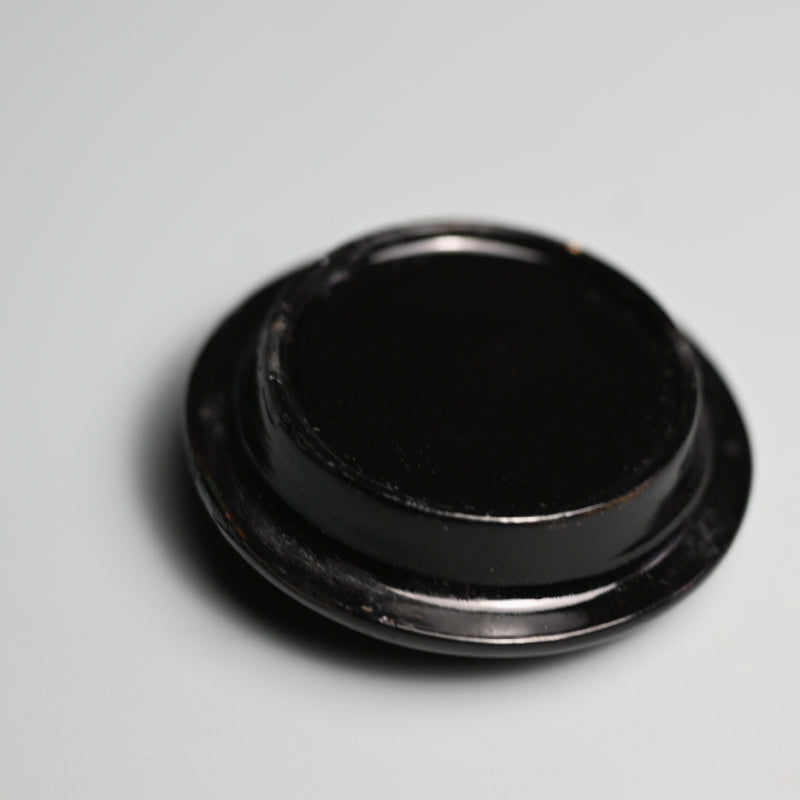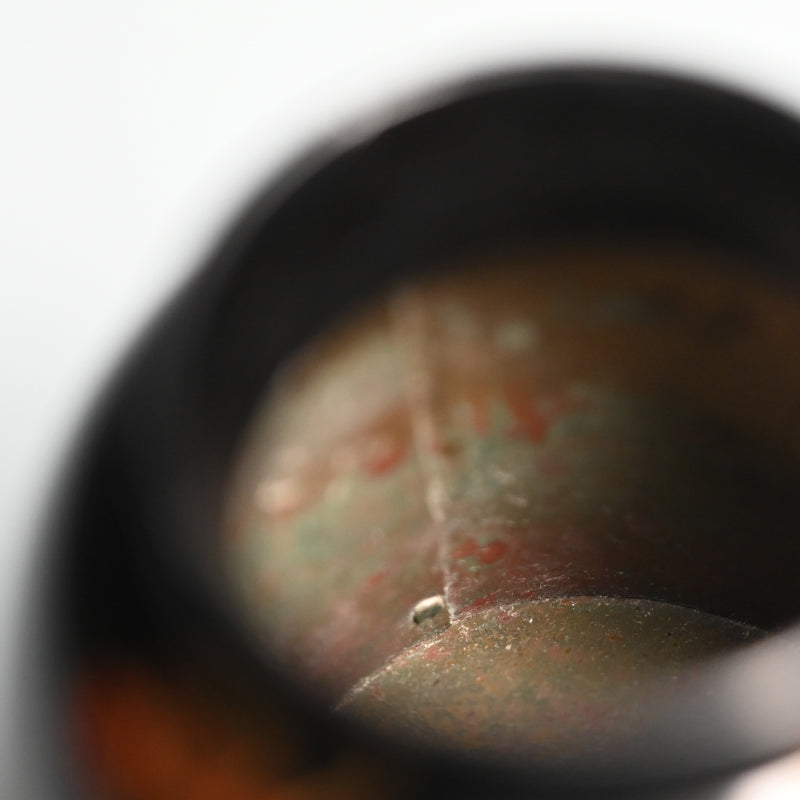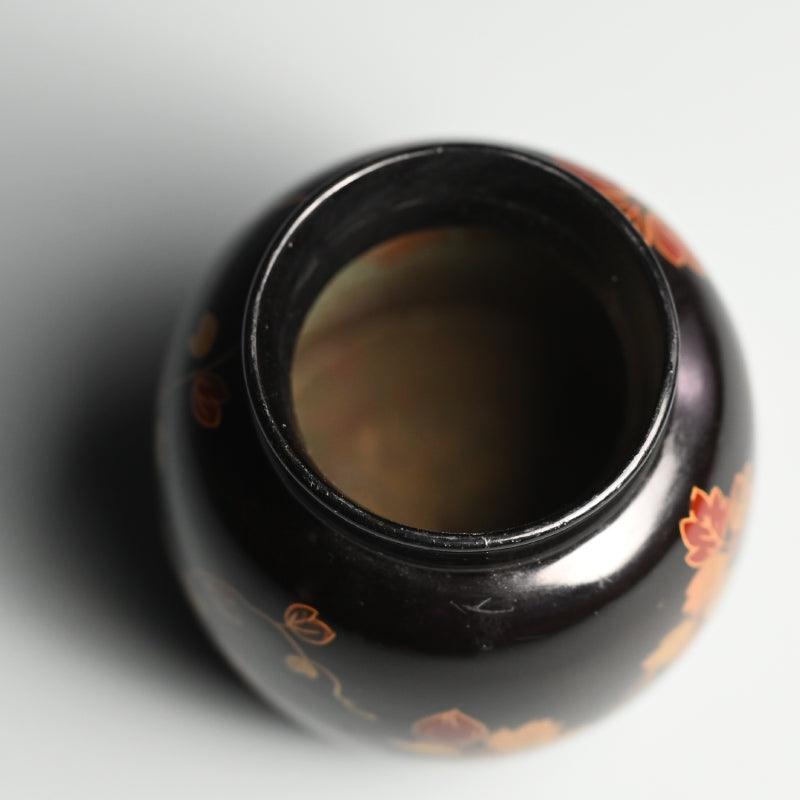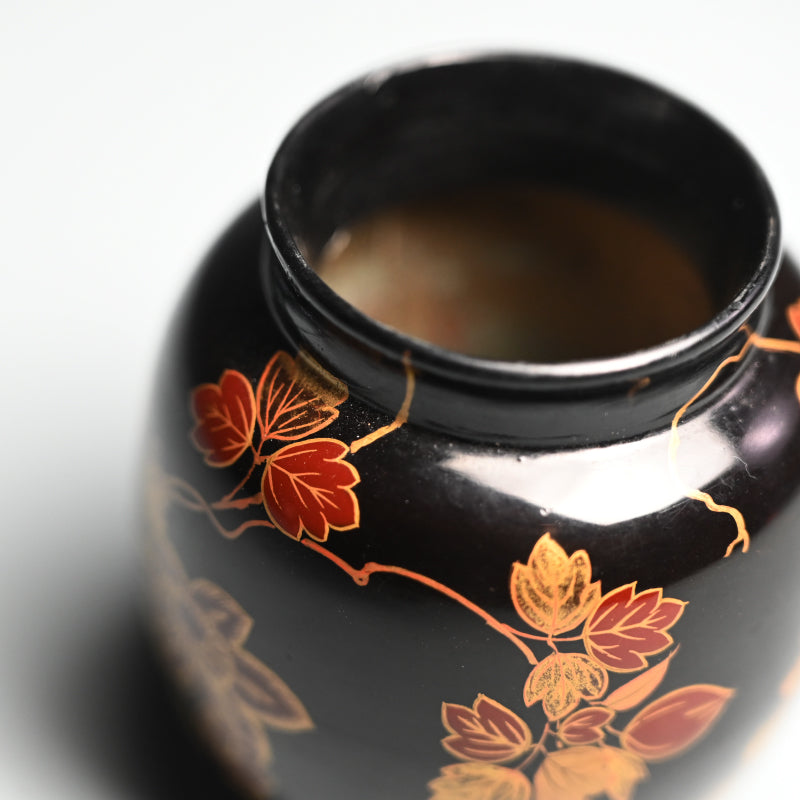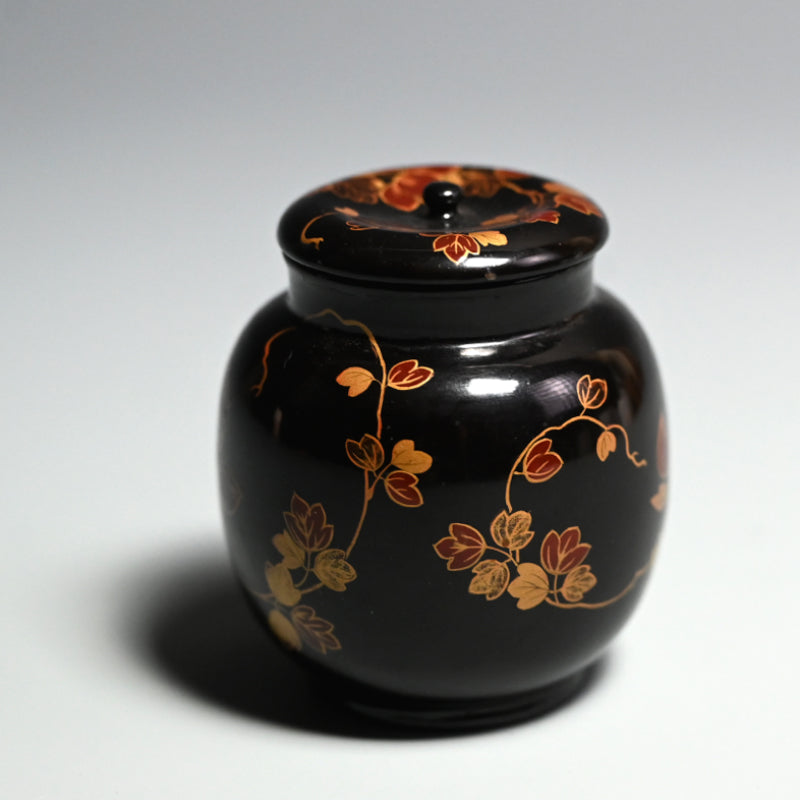1
/
of
17
Exquisite Antique Japanese Lacquer Cha-Tsubo Tea Jar ー高台時蒔絵漆茶壺
Exquisite Antique Japanese Lacquer Cha-Tsubo Tea Jar ー高台時蒔絵漆茶壺
Item Code: K225
Regular price
¥36,900 JPY
Regular price
Sale price
¥36,900 JPY
Unit price
/
per
Tax included.
Couldn't load pickup availability
A small Kodaiji maki-e tea container, the polished black lacquer covered with trailing golden vinesaccented with red. The inside is lined with metal. It is 6 cm (2-1/2 inches) diameter, 7 cm (2-3/4 inches) tall and in excellent condition, dating from the early 20th century.
Kōdai-ji maki-e is a distinctive style of Japanese lacquerware that emerged during the late Momoyama (1573–1615) and early Edo periods (1603–1868). It is closely associated with Kōdai-ji Temple, founded in Kyoto in 1606 by Nene, the widow of the famous warlord Toyotomi Hideyoshi, in his memory. The maki-e technique, which involves sprinkling gold or silver powder onto lacquer surfaces, became a prominent artistic style under the temple’s patronage.
After Hideyoshi’s death, Kita no Mandokoro dedicated herself to a life of spirituality and cultural patronage. She oversaw the construction of Kōdai-ji and supported the development of various arts, including lacquerware. Artisans under the temple's patronage created a new style of lacquerware characterized by its refined elegance and motifs inspired by nature and Buddhist symbolism. The style reflects the aesthetic sensibilities of the Momoyama period, blending boldness with intricate detail. Common themes include flowers, grasses, trees, and landscapes, reflecting the influence of wabi-sabi and Zen Buddhism.The style became closely associated with the tea ceremony, as it resonated with the principles of simplicity and elegance valued in tea culture. Many lacquered tea utensils, such as tea caddies (natsume), trays, and incense boxes, were made in this style.
Kōdai-ji maki-e is a distinctive style of Japanese lacquerware that emerged during the late Momoyama (1573–1615) and early Edo periods (1603–1868). It is closely associated with Kōdai-ji Temple, founded in Kyoto in 1606 by Nene, the widow of the famous warlord Toyotomi Hideyoshi, in his memory. The maki-e technique, which involves sprinkling gold or silver powder onto lacquer surfaces, became a prominent artistic style under the temple’s patronage.
After Hideyoshi’s death, Kita no Mandokoro dedicated herself to a life of spirituality and cultural patronage. She oversaw the construction of Kōdai-ji and supported the development of various arts, including lacquerware. Artisans under the temple's patronage created a new style of lacquerware characterized by its refined elegance and motifs inspired by nature and Buddhist symbolism. The style reflects the aesthetic sensibilities of the Momoyama period, blending boldness with intricate detail. Common themes include flowers, grasses, trees, and landscapes, reflecting the influence of wabi-sabi and Zen Buddhism.The style became closely associated with the tea ceremony, as it resonated with the principles of simplicity and elegance valued in tea culture. Many lacquered tea utensils, such as tea caddies (natsume), trays, and incense boxes, were made in this style.
Share


